Results
-
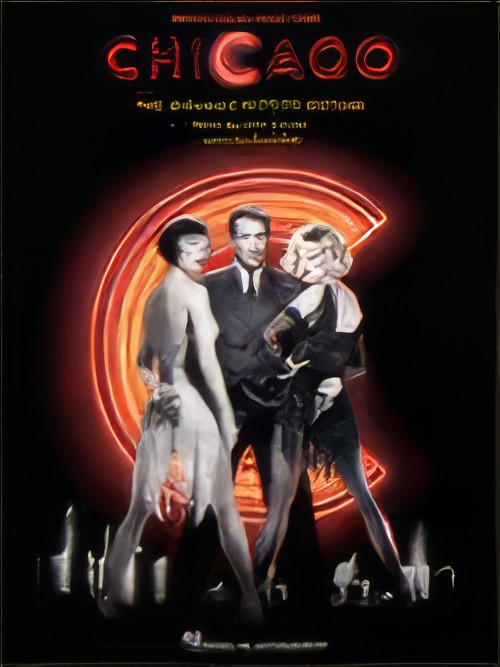 £72.99
£72.99CHICAGO (Selections) (Young Band) - Ebb & Kander - Ricketts, Ted
Music from this academy award-winning movie is rapidly gaining popularity as it harkens back to the early jazz age and raucous life style of gangster-era Chicago. This well-scored arrangement opens with a bluesy trumpet solo and includes feature spots for all sections of the band as it winds through the hits "And All That Jazz," "Cell Block Tango," "Roxie" and "They Both Reached for the Gun."
Estimated dispatch 7-14 working days
-
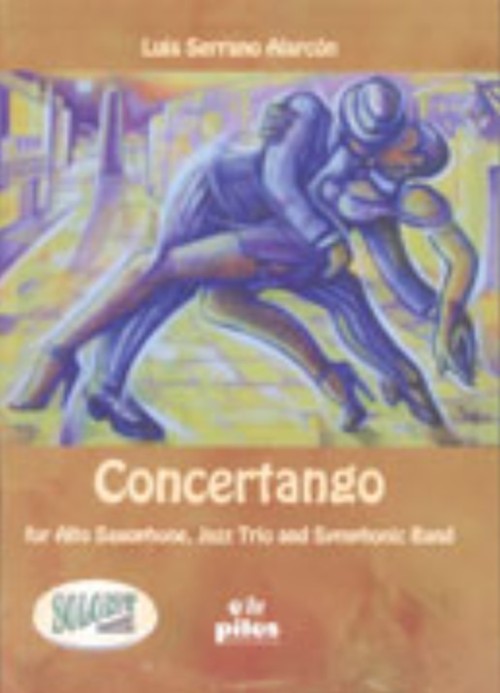 £450.00
£450.00Concertango (Alto Sax Solo and Jazz Trio with Concert Band - Score and Parts) - Alarcon, Luis Serrano
This work explores musical fusion on multiple levels through the contrast of symphonic winds to a jazz trio (piano, bass, drums). Both groups are independent at times followed by a merge into a single unique musical force. The alto saxophone soloist stands as the uniting musical element between the two groups. The omnipresent and uniting musical force is the tango and, in particular, the works of Astor Piazzolla. Luis Serrano Alarcon has transformed the rhythms, ensemble settings and stylistic idioms into a powerful artistic statement that communicates to all. A highly effective work for mature ensembles.Duration: 26.45
Estimated dispatch 7-14 working days
-
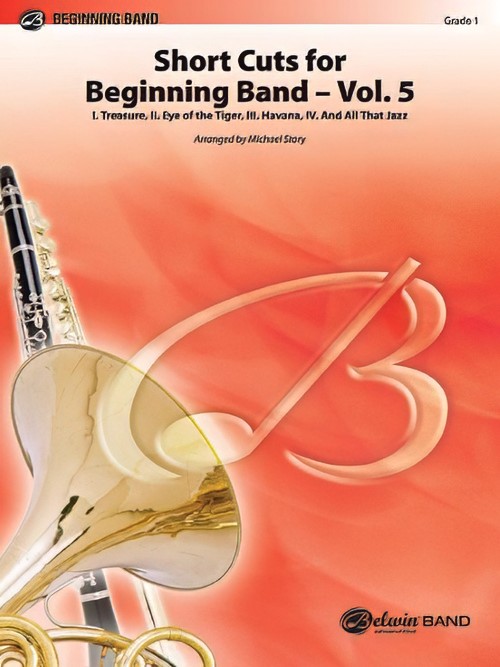 £61.00
£61.00Short Cuts for Beginning Band - Volume 5 (Concert Band - Score and Parts) - Story, Michael
A sure fit for your beginners using just the basics, this suite features Bruno Mars' "Treasure," "Eye of the Tiger" from Rocky III, Camila Cabello's "Havana," and closes with "And All That Jazz" from Chicago. Each theme is focused toward a specific instructional objective and is extremely performable. The tunes can be programmed all at once or throughout your school year.Duration: 3.45
Estimated dispatch 7-14 working days
-
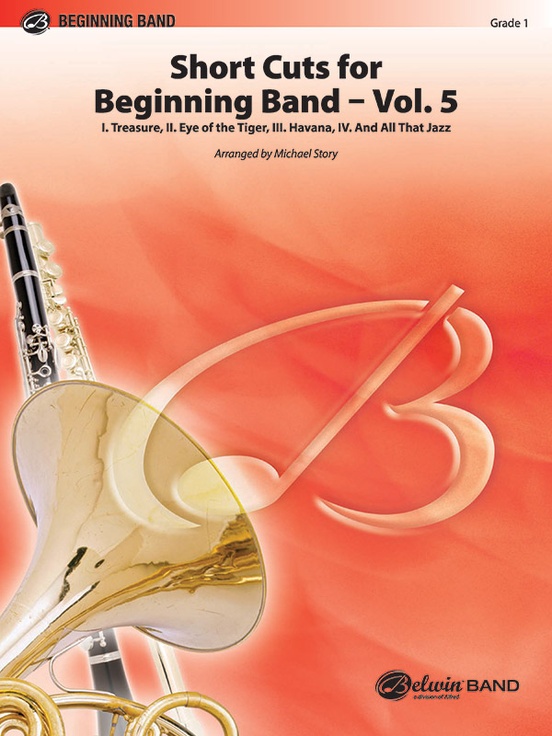 £60.50
£60.50Short Cuts for Beginning Band -- Vol. 5
A sure fit for your beginners using just the basics, this suite features Bruno Mars' "Treasure," "Eye of the Tiger" from , Camila Cabello's "Havana," and closes with "And All That Jazz" from . Each theme is focused toward a specific instructional objective and is extremely performable. The tunes can be programmed all at once or throughout your school year.
Estimated dispatch 3-5 working days
-
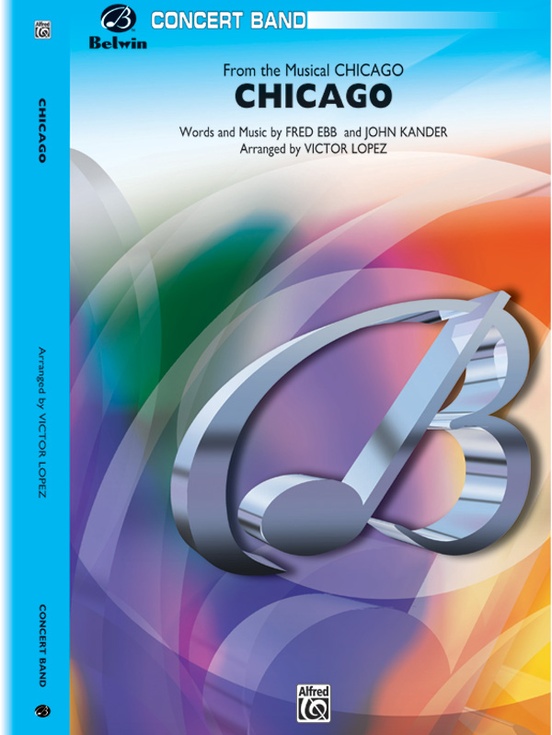 £73.50
£73.50Chicago! (from the Musical )
This Broadway sensation keeps drawing the crowds. Victor Lpez has scored a home run with his fresh new medley of all of your favorite selections from the musical including: "My Own Best Friend," "Razzle Dazzle," and of course, "All That Jazz." Don't miss this new arrangement scored at the concert band level. It's hot. A certain audience pleaser. (4:18)
Estimated dispatch 3-5 working days
-
£82.50
On That Night All Was Silent - David Samuel
Jazz pianist David Samuel provides a completely new setting to the classic Silent Night carol. The theme opens with a Clarinet solo with counter melodies stated from other parts of the melody. With the use of creative twists in themes at every turn, audiences will be captivated by this familiar, yet original, musical journey.
Estimated dispatch 7-14 working days
-
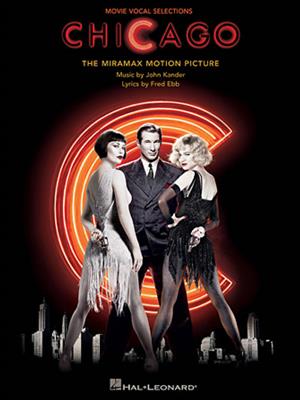 £42.50
£42.50Music from Chicago
From the blockbuster movie, here is an easy arrangement of the show's most popular songs. Includes: And All That Jazz, Cell Block Tango and Roxie.
Estimated dispatch 7-14 working days
-
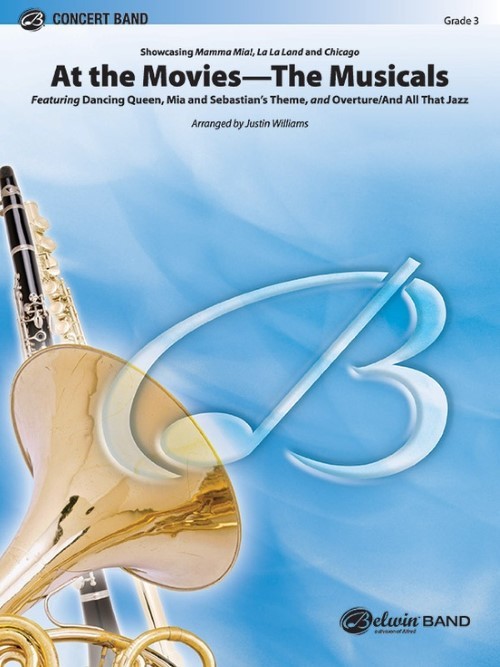 £70.50
£70.50At the Movies - The Musicals (Concert Band - Score and Parts) - Williams, Justin
Musicals and movies are a match made in heaven! Mamma Mia, La La Land, and Chicago are three timeless masterpieces of this immensely popular genre. Incorporating "Dancing Queen," "Mia and Sebastian's Theme," and "Overture/And All That Jazz," At the Movies - The Musicals provides a memorable and exciting journey into the wonderland of movie musicals.Duration: 3.45
Estimated dispatch 7-14 working days
-
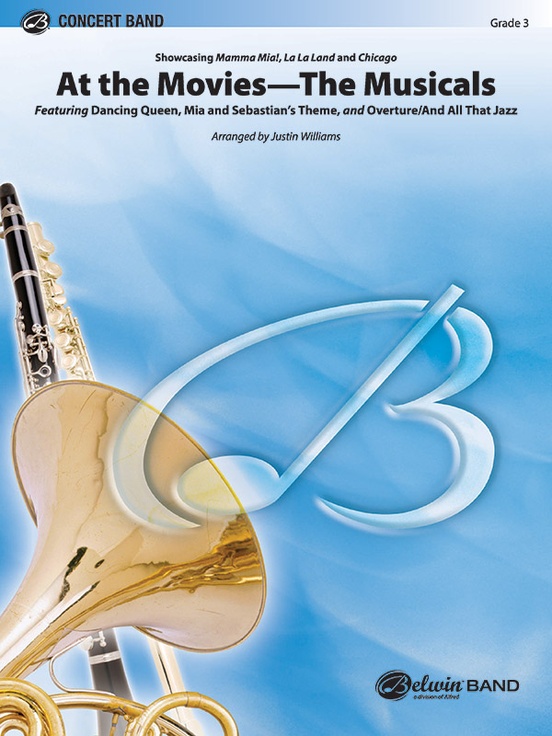 £70.50
£70.50At the Movies---The Musicals
Musicals and movies are a match made in heaven! , , and are three timeless masterpieces of this immensely popular genre. Incorporating "Dancing Queen," "Mia and Sebastian's Theme," and "Overture/And All That Jazz," provides a memorable and exciting journey into the wonderland of movie musicals.
Estimated dispatch 3-5 working days
-
 £435.40
£435.40Goldberg 2012 - Svein H. Giske
The first time I heard Bach's Goldberg Variations was in the movie Silence of the lambs, in the early 1990s. I noticed the beautiful background music in one of the scenes, but at that time I didn't know what it was. A few years later, when I was studiying at the Grieg Academy, I got to know the entire piece. For me, this is a piece of music which I can listen to countless times. I think it sounds as fresh today as it did more than 15 years ago and it never ceases to inspire me. Both Bach's composition and Glenn Gould's famous 1955 recording (which was the first one I heard) still makes a great impression on me. Before Gould recorded it at age 22, it wasn't a highly ranked piece amongst pianists and Bach was by many viewed as a bit old-fashioned. The young Canadian turned all this around. He managed to portray Bach in a reformed way, producing fine nuances in phrasing and making the many layers in Bach's music more transparent than anyone before him. Thus he plunged both himself and Bach (back) onto the international music scene. When The Norwegian Band Federation (NMF) asked me to write the test piece for NM in 2012, it was only natural for me to use the Goldberg Variations as a starting point and inspiration for my work. Since I was a teenager at NMF's summer courses in the mid eighties I've always listened to many different styles of music. Growing up in Sunnmre with the Brazz Brothers as teachers and mentors, jazz-, pop/rock- and folk music were early on a natural part of my musical background. I also have my classical education from the Grieg Academy on trumpet. As the title of my piece implies, I've wanted to bring Bach to the present and put his music into various modern musical landscapes. I think you can bring about a special kind of energy when music from different genres are mixed and I've tried to do this by mixing Bach with artists and musical styles from the present. In Goldberg 2012, the music is often constructed by several layers, which in a way are living parallel musical lives. They are seemingly moving or floating freely, almost unaware of each other, but bound together by the same basic pulse. The rythms, however, are often notated on a different rythmic subdivision level than the usual 8th- or 16th note levels. By doing this, I hope to achieve transparent sounds that rythmically are perceived as more free and detached from each other. In large sections of the piece, pop/jazz is fusioned with elements from Bach. I guess you could have this little scene as a synopsis for the piece: picture a group of musicians meeting: some are classical performers, some are jazz. They start to improvise together, each in their own voice or musical dialect and I'm sort of in the middle, trying to write down what they are playing. This is what I feel much of Goldberg 2012 is about. The foundation of the piece, in addition to Bach and references from pop/jazz music, lies also in my own material. This material, basically two chords, is heard in it's purest form in the 1st movement. I use these chords to create scales, new chords and different motifs which contribute to blend together the different moods of the piece. It has not been my intention to copy Bach's form (theme and 30 variations), but rather to use the bits and pieces that I like the most as an inspiration for my own variations. The 1st movement, Aria 2, is for my 3rd son, Olav, who was born on the 21st of April 2011, and the 5th movement, From long ago, is dedicated to the memory of my father, Svein J. Giske, who passed away on the 6th of June 2011. -Svein H. Giske, January 2012-
Estimated dispatch 7-14 working days
